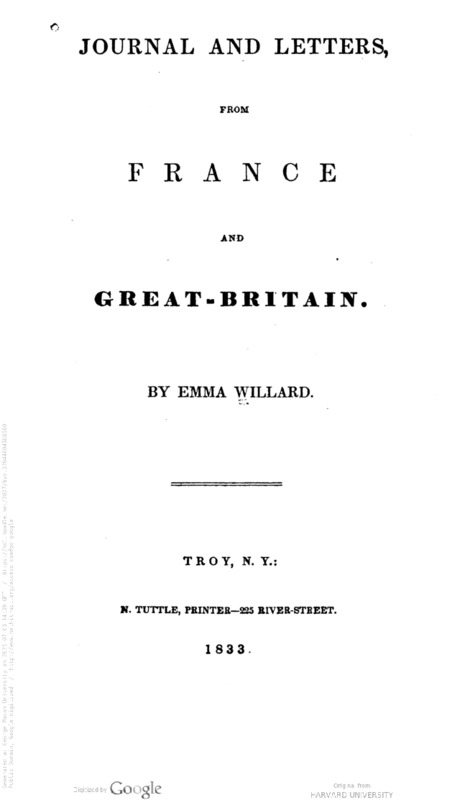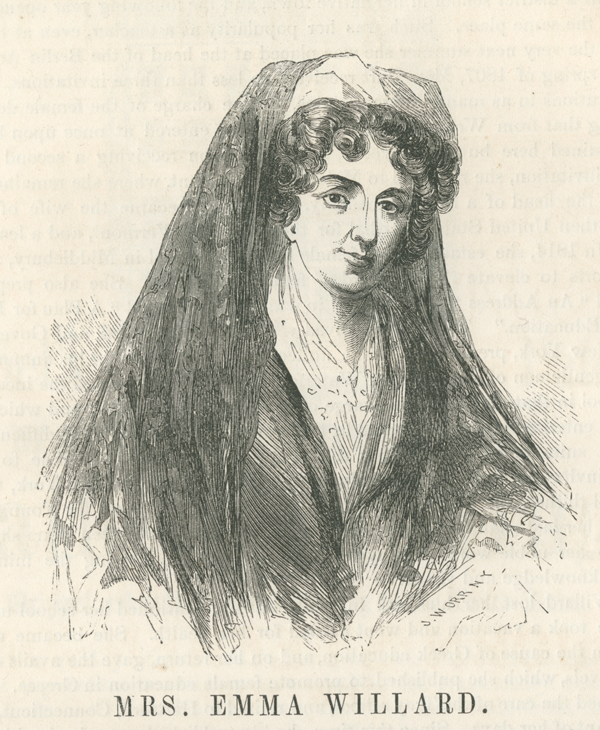"Observations for my Country Women": Emma Willard's Grand Tour
This project traces the Grand Tour of Emma Willard, an American women's education activist and reformer, through her travel narrative Journals and Letters: From France and Great Britain, published in 1833. Willard's narrative includes journal entries, letters to her sister, and letters to her students. Willard desired to published this narrative as a collection of "observations for her countrywomen," giving all literate women the same chance she had to expand their own worldviews. She meticulously documented the similarities and differences between America, Europe, and Great Britain, through studying the social culture, architecture, landscape, and the people she interacted with. Willard continually stressed the importance of transatlantic connections through intellectual, politicial, and economic interactions, believing it to be the best way for America to ultimately prosper in its own way.
Willard's tour only enhanced her belief in the importance of friendly relations between America, Great Britain, and Europe, and that each can benefit from the other through literary, scientific, and religious materials. In studying her journal, it is a snapshot into the transatlantic networks of Americans, Europeans, and Britons, as well as the importance of geographical, scientific, and literary knowledge. Willard’s connections abroad included fellow Americans Washington Irving and James Fenimore Cooper, as well as a number of English writers. By looking at the monuments she connected with, the landscape she described, and the conversations she documented, we see how women fit themselves into the narrative of education and transatlantic networks.
Questions for future research
1. Are there patterns within the three types of entries Willard publishes in her journal (private journal entries, letters to her sister, and letters to her pupils)? If so, what are the difference and similiarities?
2. How does Willard's national identity reflect in her writings? Does she feel more at home in one country than another? Does her reputation as an American change her experiences in the different cities and countries?
3. What were the effects of the locations Willard visited only briefly, such as Versailles, Liverpool, Manchester, and the island of Scotland?
4. Do Willard's textbooks reflect a different view of Europe and Great Britain from prior to her trip abroad? Were these initial impressions influential to her trip?

